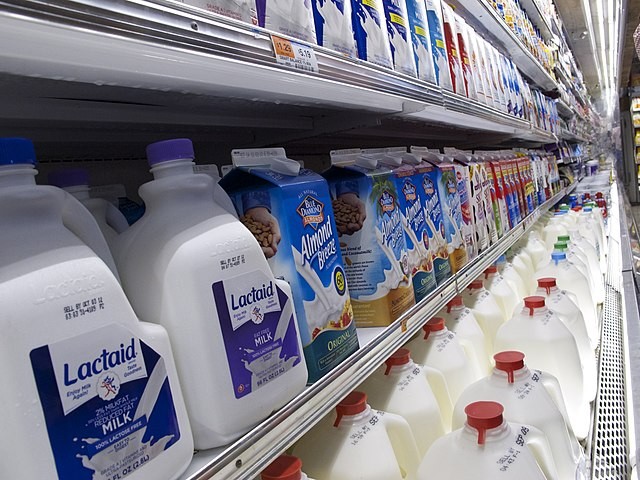
(Photo: Wikimedia Commons/AshokaJegroo)
Bird flu has affected the supply of milk. Federal regulators found traces of the bird flu virus in retail milk samples.
Traces of Bird Flu Virus Found in Milk Sample
The Food and Drug Administration (FDA) said in a statement released on Thursday that they found fragments of bird flu virus in about 20 percent of retail milk samples they tested. According to the organization, samples from regions of the nation where the virus is known to affect dairy animals were more likely to test positive.
The result indicates that the avian flu outbreak in dairy cows is more widespread than the official total of 33 affected herds across eight states.
Public health specialists concur with regulators' opinion that there is no proof this milk is dangerous for consumers or contains live viruses.
"It suggests that there is a whole lot of this virus out there," said Richard Webby, a virologist and influenza expert at St. Jude Children's Research Hospital.
According to Dr. Webby, there is hope that the H5N1 virus will be eliminated from the country's dairy farms. However, he added that it would be challenging to create effective control measures without knowing the extent of the outbreak.
The results also raise concerns about how the virus has managed to avoid detection and potential further areas of quiet transmission. Scientists who believe that the federal testing technique is too narrow to thoroughly understand the degree of viral dissemination have questioned it.
The FDA did not provide details on the number or sources of the samples.
Dr. Webby added, "You'd want to go not just to the places you knew there was activity and cows—you want to go to places where at least there's no reported" bird flu.
Experts estimate that the H5N1 bird flu virus should be rendered inactive by the pasteurization procedure, which involves briefly heating milk.
"And when you destroy the virus, it's going to release genetic material," said Samuel Alcaine, a microbiologist and food scientist at Cornell University. There is no way for the genetic bits that remain to spread infection.
He added that finding a trace of the virus in milk was not surprising and didn't mean that the milk was unsafe.
ALSO READ: H5N1 Bird Flu Has Spread to Humans With 'Extraordinarily High' Mortality Rate, WHO Warns
Bird Flu Has Spread to Humans
According to chief scientist Jeremy Farrar of the UN health agency, the A (H5N1) strain has turned into a "global zoonotic animal pandemic." Their biggest worry was that the virus, which only infected chickens and ducks, had already evolved and infected humans. Worse, it could spread from human to human.
Currently, there is no evidence that the influenza A(H5N1) virus spread among humans. Nevertheless, Farrar notes that "the mortality rate is extraordinarily high" in the hundreds of cases in which humans have gotten the disease through contact with animals.
The disease does not spread from person to person and is not readily infectious.
Last year, there were rumors that one father got the virus from his 11-year-old daughter, who passed away due to the bird flu. However, the CDC said that there was no mutual transmission between the father and daughter after they investigated the case. The organization stressed that bird flu rarely affects humans, and when it does, it spreads through close contact with infected birds.
RELATED ARTICLE: Burkina Faso Bird Flu Outbreak: 500,000 Chickens Die Due to H1N1 Strain
Check out more news and information on Bird Flu in Science Times.













!['Cosmic Glitch' in Einstein's Theory of General Relativity Could Be Explained in This New Scientific Tweak [Study]](https://1721181113.rsc.cdn77.org/data/thumbs/full/53435/258/146/50/40/cosmic-glitch-in-einsteins-theory-of-general-relativity-could-be-explained-in-this-new-scientific-tweak-study.jpeg)
